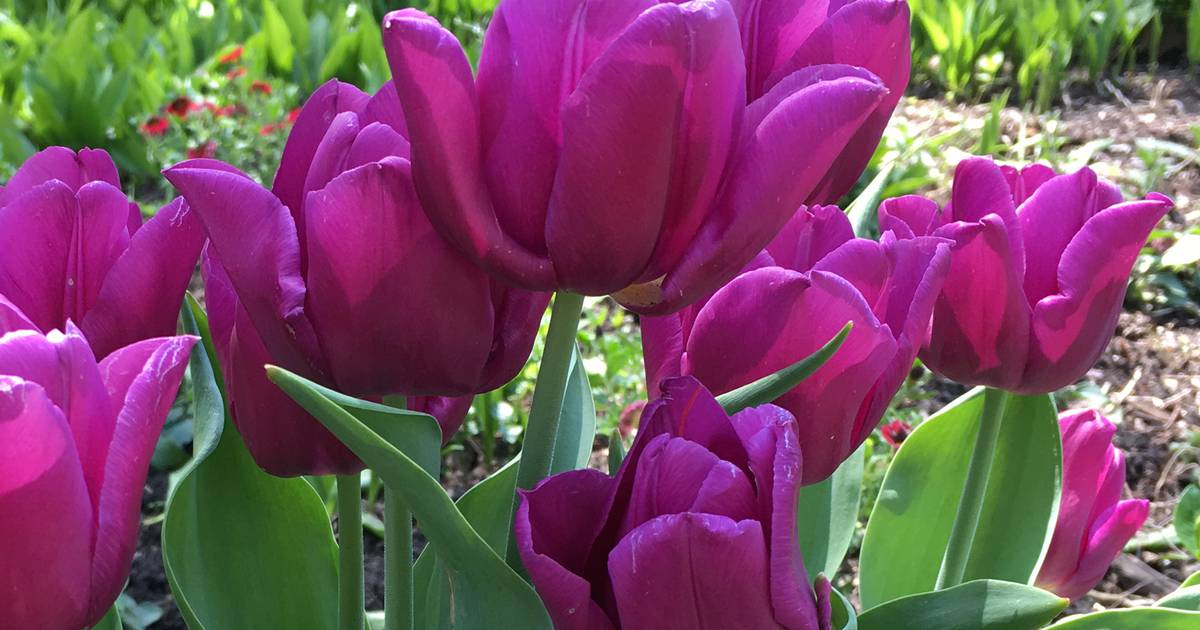The end of summer’s heat brings a golden time, when it’s not too hot, not too cold, and perfect for gardening.
“There’s still plenty to do in fall before the close of the growing season,” said Spencer Campbell, manager of the Plant Clinic at The Morton Arboretum in Lisle.
Here are some garden tasks to invite you outdoors.
Plant, transplant or divide perennials: If you get perennials into the ground before roughly mid-September and keep them watered, they will have time to get established and grow some new roots before the soil freezes. “You can divide or transplant any perennial in early fall, regardless of when it blooms,” Campbell said.
Plant or transplant shrubs and trees: Many kinds of trees and shrubs can be planted in fall, although a few fare best if they are planted in spring, such as bald cypress, American hornbeam, ginkgo, larch, magnolia, hemlock, sweet-gum, tulip tree and willow. For other species, plant evergreens earlier in fall to give them ample time to get established. Other kinds of trees, such as oaks, maples, and flowering crabapple trees, can generally be planted in fall until the end of October. “Make sure you dig a wide hole for a tree or shrub and that you don’t plant it deeply,” he said. For detailed tree-planting advice, see mortonab.org/planting-trees.
Plant spring-flowering bulbs: “Bulbs such as daffodils, crocuses and tulips are little packages of springtime,” Campbell said. Each one contains a nascent flower that will sprout and bloom once it has spent a needed period in cold soil. Plant bulbs once the soil has cooled but before it freezes, usually from mid-October to mid-November. Bulbs planted late, as the soil nears freezing, will have less time to grow roots and prepare for spring.
:quality(70)/cloudfront-us-east-1.images.arcpublishing.com/tronc/XQWEN6RM2ZEWFKGEFGDPDULGSY.jpg)
Dig up summer bulbs and store them. Plants such as dahlias, gladiolus, and cannas, which are native to subtropical parts of the world, will not survive the winter in frozen soil. “Dig them up after the first frost or as their foliage dies back, whichever comes first,” Campbell said. Discard the stems and leaves, shake the soil off the bulbs, corms, or rhizomes, and store them in dry peat moss, shredded leaves or vermiculite. “The key is to keep them dark, cool and dry all winter until it’s time to plant them in spring,” he said.
Be alert for cold weather. “It’s traditional to expect our first frost about October 15,” Campbell said. Nowadays, frosts and frozen soil can come earlier or later than we’re used to because our weather has become much more variable.” Instead of going by the calendar, watch the forecast and pay attention to the plants and soil in your garden.
Prepare a new bed. Whether it’s for next year’s vegetables or flowers, fall is a fine time to turn the soil and add generous amounts of compost, shredded leaves, or other organic matter. Over the winter, freezing and thawing, as well as organisms in the soil, will make the soil more friable and prepare it for planting.
Reseed the lawn. Cool-season lawn grasses germinate well in the temperate weather of early fall. Overseed established lawns or prepare and seed new lawn areas and keep the seed moist until it sprouts. Whether you are seeding or not, keep mowing the lawn as needed.
Wait to prune until late fall. “Pruning now will stimulate growth at the wrong time of year,” Campbell said. Wait until late fall, when trees and shrubs are losing their leaves and going dormant, before pruning.
Pay attention to rainfall. Check whether there is sufficient moisture in the soil from rainfall, and if not, keep watering all through autumn until the soil freezes. “Make sure that everything you plant in fall has enough time before winter to grow some new roots, and make sure there is water in the soil for those roots to absorb,” Campbell said.
For tree and plant advice, contact the Plant Clinic at The Morton Arboretum (630-719-2424, mortonarb.org/plant-clinic, or plantclinic@mortonarb.org). Beth Botts is a staff writer at the Arboretum.
